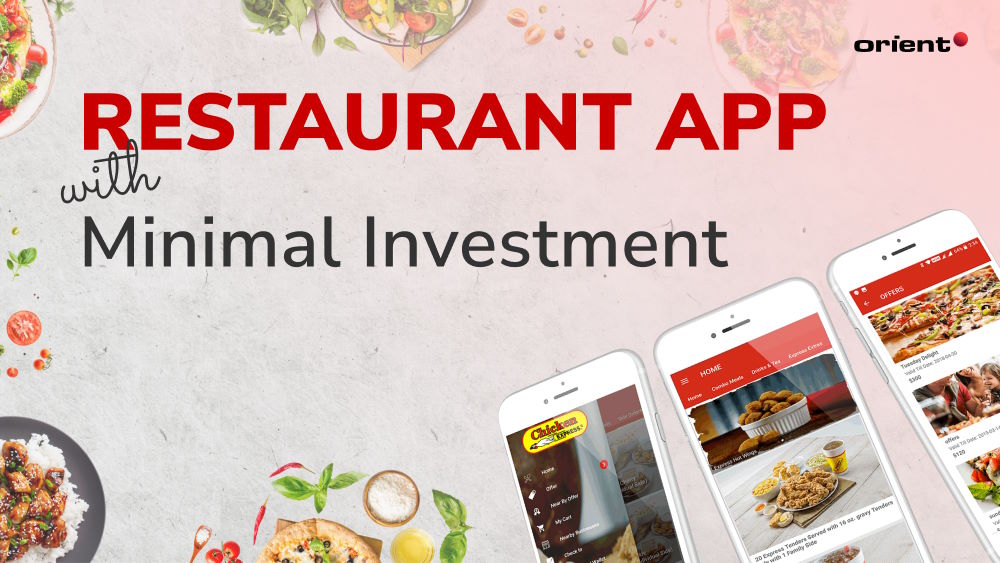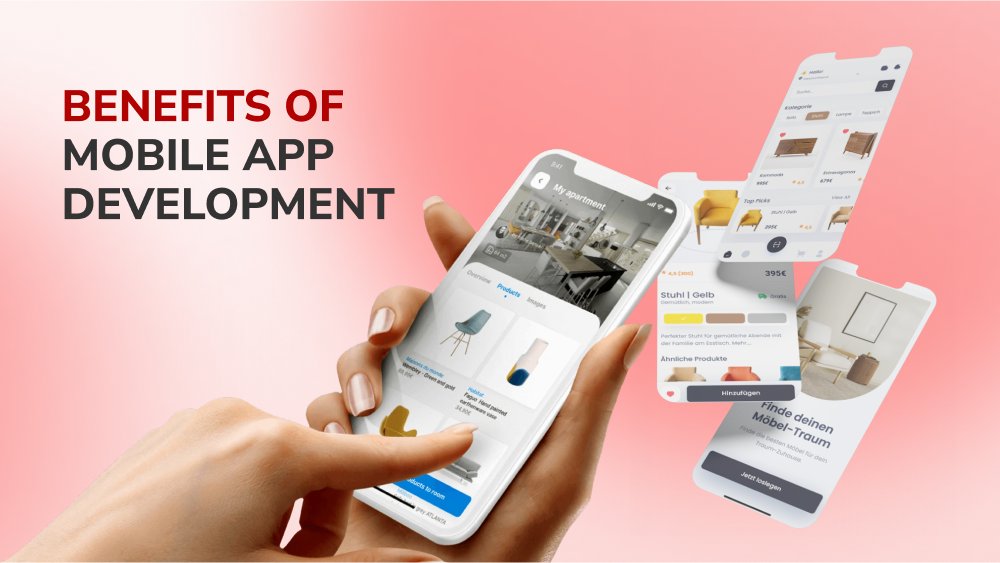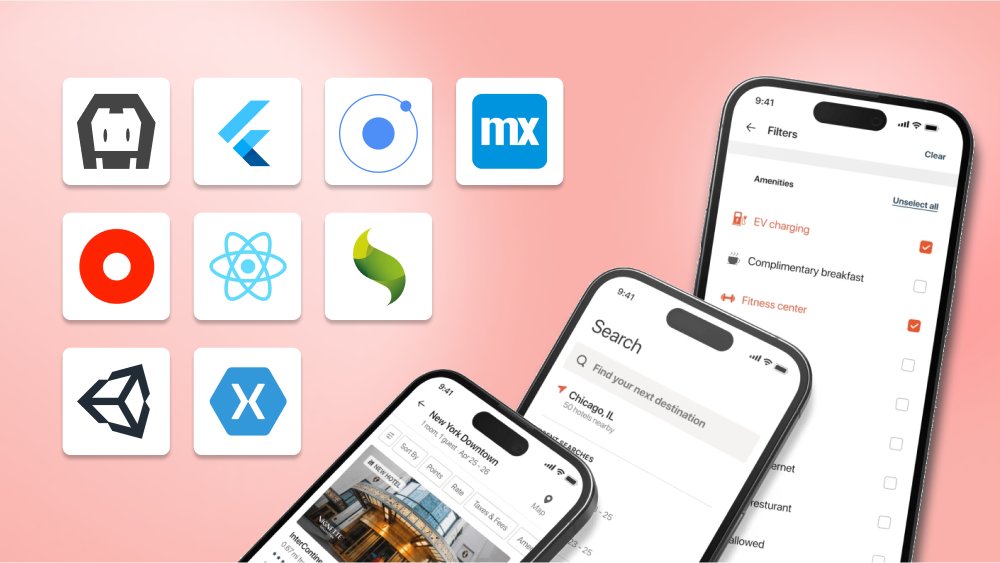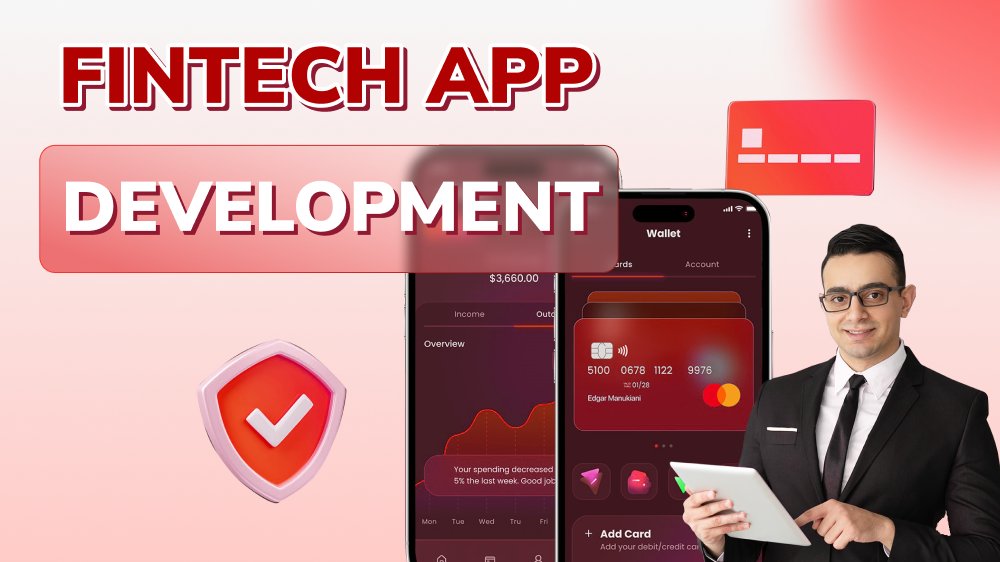How to Create a Restaurant App with Minimal Investment

Content Map
More chaptersTypes of delivery apps are on the rise due to the evolving demand for doorstep services. Among grocery delivery apps, which is considered the second most profitable niche, food delivery app development undeniably remains the industry leader.
Some businesses partner with third-party food delivery platforms to capture the perfect opportunity and bring their menu online. Meanwhile, the rest decided to embark on the path of developing their own restaurant app, building their own ecosystem by self-providing food delivery service in the comfort of customers’ homes or offices.
However, by comparing the pros and cons of the two methods from a business perspective, I choose the self-development process. Undeniably, creating restaurant apps is a challenging task, but the final outcomes might amaze you due to the higher value in terms of brand recognition and customer experience optimization. With a minimal budget, how to create a restaurant app but still generate profit is a widespread concern of businesses regardless of size. Read on to find your solutions.
The Rising Demand for Restaurant Mobile App Development

The pervasive influence of digital technology has revolutionized the way people interact with types of services, including food delivery from restaurants. In the past, customers had only one option for satisfying their hunger by going to a restaurant; today, the rapid development of restaurant mobile apps provides them with a more convenient and unique dining experience than ever before.
Just a few clicks and meals are delivered right to the doorstep. This model is especially suitable for busy customers who only have a little time to travel and individuals whose geographical location is not convenient to the restaurant.
According to Statista, the market size of the global online food delivery sector was estimated at over one trillion U.S. dollars in 2023. Although traditional reservations and orders are still the top choices for consumers to fully enjoy the flavor and ambiance of a meal, they no longer remain the only method to profit in the competitive restaurant industry.
In addition to revenue from customers who visit the restaurant and dine in person, businesses now also receive additional income from online users who want to enjoy the menu at home. As such, restaurant app development has become a strategic imperative for establishments aiming to meet customer demand and thrive in a digital-first era.
Why Developing Your Own Restaurant App Is Better than Relying on Third-party Platforms

Why create a restaurant app instead of linking with third-party platforms to simplify service listing? Unlike partnering with a third-party platform to list your restaurant business, which incurs associated fees, self-developing your custom restaurant app brings high benefits in terms of brand recognition. However, that’s not all, as the benefits of self-development go beyond that.
Better Control over Costs and Profit Margins
Instead of relying on the help of third-party platforms to bring your food service closer to online customers, self-sufficient businesses in the restaurant app development process have great advantages in terms of cost and profit control. Using a completely in-house approach, the company has complete control over its financial planning for the software development life cycle, from deployment and maintenance to upgrades according to their specific needs.
It is undeniable that linking with vendors is a convenient and fast method to reach app users. In return, you are subject to associated fees and commission structures imposed by them for each completed order. Prolonged costs incurred negatively affect the project’s profit margin. Instead, an internally developed app gives businesses autonomy over pricing structures, promotions, and loyalty programs to directly influence profit margins and increase ROI software.
Enhanced Brand Images and Customer Experience
If a restaurant owner chooses to link their restaurant services with third-party delivery platforms, a low percentage of them successfully build brand recognition. These platforms often prioritize their own branding over that of individual restaurants. Besides, according to app usage behavior, app users tend to pay more attention to the main application they access instead of the sea of brand options presented on the platforms. As a result, partnering with third-party vendors can potentially hinder companies’ ability to establish their own unique identity.
By using a direct-to-consumer approach through distinct restaurant apps, businesses open a full control opportunity for brand presentation while freely customizing their menu, promotions, and special offers in accordance with their own operating and marketing strategies. All of these elements further solidify the restaurant brand’s reputation and distinguish it from competitors.
High Level of Flexibility and Customization
By collaborating with third-party platforms, restaurant founders simply list their food offerings while all customization options are limited. However, things are different with self-development. Having full control over the operation and future of in-house restaurant apps helps businesses be more flexible in implementing unique features, personalized loyalty programs, and seamless integration with their existing systems. Such customization not only helps to adapt promptly to changing market trends, technological advancements, and customer behaviors but also drives customer satisfaction and loyalty.
Reduced Dependency
Every playground has its own rules. Once you choose to use a third-party platform to serve meals to online customers, you must accept the policies of the platform you use, even though they may drastically affect your restaurant offering and brand visibility. Fluctuating commission rates change your entire financial plan, limited access to customer data hinders the analysis of customer consumption behavior, and competition from similar establishments listed on the same platform hinders your visibility, which are some typical examples.
On the contrary, investing in your own restaurant app reduces the level of dependency on third-party platforms. Businesses now gain greater autonomy and the freedom to tailor apps to their own needs.
How to Create a Restaurant App with Minimal Investment
As you may know, DoorDash is a prominent player in the food delivery industry. According to official sources, DoorDash is the country’s most popular food delivery service, with more than 65% of the market share, along with its subsidiaries. This brand is considered the ideal model that many businesses aim for when venturing into the restaurant mobile app development process.
While the budget to make this a success is incredible, it doesn’t mean you can’t create your own restaurant app with minimal investment. Using a restaurant app maker is a popular way to build quality products. However, there’s more to what you can do to minimize development costs than that.
Utilize Existing Restaurant App Builder Tools
Before moving on to other methods to help you reduce investment costs, let’s begin with the most popular one - leveraging existing restaurant app makers. These are tools designed specifically to simplify the process of developing restaurant apps for users regardless of expertise. With a user-friendly interface, countless pre-built templates, and customized features, these platforms allow beginners without extensive coding knowledge to freely tailor their restaurant apps to their needs.
Compared to the entirely self-development approach, which consumes budget, time, and effort, no-code or low-code app builders are a more affordable solution as they handle almost all infrastructure, updates, and maintenance. Subscription-based models supported by types of builder tools help restaurants to start small and expand their app’s capabilities as their business grows.
Opt for Progressive Web Apps (PWAs)
A restaurant app does not necessarily require a complex mobile platform when it can be accessed through web browsers and provide app-like functionality, even without being downloaded from app stores like Apple App Store or Google Play Store. This strategic approach is called Progressive Web Apps (PWAs) - a cost-effective alternative to traditional native app development.
By allowing restaurants to leverage web technologies to deliver features such as offline access and push notifications, PWAs help you reduce the application development costs that come with running multiple operating systems in parallel. Just develop once, and you will get all you need, simplifying future maintenance and updates and optimizing a seamless user experience.
Explore Affordable Development Options
The success of your restaurant app is built on the foundation of a skilled team. Of course, you can still take advantage of in-house developers to complete the project. However, this option is only suitable for businesses with abundant human resources as costly and time-consuming hiring processes may hinder the efficiency and cost-effectiveness of building a restaurant app, especially for those seeking to minimize investment.
Meanwhile, exploring alternative development approaches, such as hiring freelancers or partnering with software outsourcing companies, gives businesses an opportunity to access specialized skills, reduce fixed costs, and expedite the development process. You can use these hiring methods depending on your needs and project length without long-term commitment while still ensuring the successful creation of a high-quality restaurant app.
Start with Minimum Viable Product (MVP)
To predict user reactions to your restaurant app, you can start small with a Minimum Viable Product (MVP) instead of immediately implementing the entire development process. By focusing on developing a test application that includes only core features and functionality, businesses efficiently allocate resources while mitigating excessive costs. With feedback collected from early adopters, companies have a clearer view of user satisfaction ratings for new products based on real-world usage and preferences, thus eliminating or refining redundant and unnecessary features for later major versions.
Use Revenue-sharing Models
The revenue-sharing model is an approach that entails establishing partnerships with restaurants or other relevant entities, including both the revenue generated and development costs for the apps distributed among the involved parties. Simply put, this model reduces initial development costs in exchange for a percentage of the app’s future earnings. The incentive split can be equal or proportional, depending on the agreement between the two parties.
The revenue-sharing model is especially suitable for startups with limited investment capital who still need to develop software products. As the budget used for the necessary resources and expertise during the development process is shared throughout the collaborative environment, businesses reduce the financial burden and speed up the process of launching a restaurant app to the market. However, it is worth noting that this model is a highly risky method requiring extensive knowledge of participants.
Apply Hybrid Solutions
Besides the PWA approach, applying hybrid app development that combines elements of both web and native applications is also an effective method to create a restaurant app with minimal investment. By using frameworks like Flutter or React Native, hybrid solutions allow the development team to write a single codebase and deploy it on various platforms, reducing the time and capital costs spent on building separate native apps for iOS and Android. If you need to add a new feature or perform maintenance, do it once, and all changes will be automatically updated on all platforms.
Creating a restaurant is undeniably a daunting task. Although tips for minimal investment are already being applied, it is worth noting that additional costs can still rise up due to future uncertainty. Risk management plays an important role in such situations. If you are looking for expert advice for improved operational strategies or have the need to hire affordable professionals for your unique restaurant app development project, feel free to contact Orient Software for devoted help.







